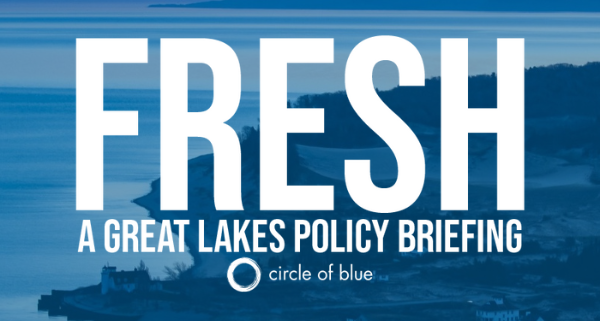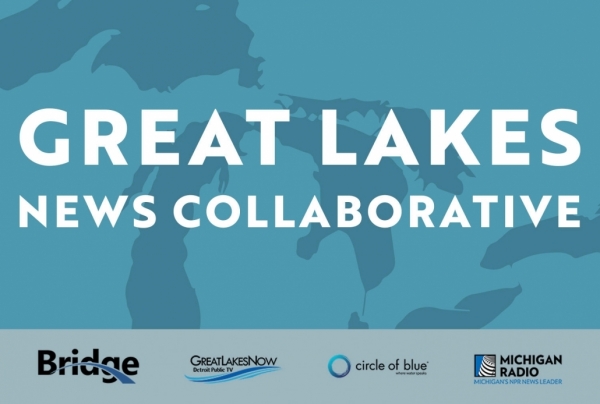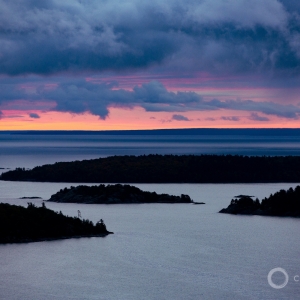Fresh, October 17, 2023: EPA’s Largest-Ever Great Lakes Cleanup Project Announced for Milwaukee
October 17, 2023
Fresh is a biweekly newsletter from Circle of Blue that unpacks the biggest international, state, and local policy news stories facing the Great Lakes region today. Sign up for Fresh: A Great Lakes Policy Briefing, straight to your inbox, every other Tuesday.
— Christian Thorsberg, Interim Fresh Editor
This Week’s Watersheds
- The EPA announced a $450 million project to remove close to 2 million cubic yards of toxic sediment from the Milwaukee estuary.
- In a new report, activists in Benton Harbor, Michigan, warn of a ‘looming’ water affordability crisis.
- Aging dams in Minnesota — at once an environmental, social, and economic problem — may be converted to whitewater parks.
- Both Lake Superior and the Buffalo River, the Lake Erie tributary that was once so polluted it burned, will receive funding for restoration efforts.
Wisconsin is sending some of its collected PFAS to Alabama’s Black Belt, sparking controversy and accusations that the action perpetuates environmental racism.
“You can’t safely contain nothing that’s man-made. So why bring it here?” — Military veteran Jimmie Williams, 69, a resident who lives near the Chemical Waste Management landfill.
Some 38,500 gallons of PFAS, in the form of firefighting foam, are being shipped from south-central Wisconsin to a hazardous waste landfill in Emelle, Alabama, Wisconsin Watch and AL.com report. No such landfills are located in Wisconsin. But the move seemingly burdens the poorer, Black community near Emelle with toxic waste from afar.
Residents there worry that the PFAS will leak into the local aquifer, or dissipate into the air, worsening the community’s health. The landfill, which was founded in 1977 with little to no input from the Black community, remains an unwanted blight by residents. It is regularly the destination for toxic waste generated elsewhere in the region, or in other states. The Wisconsin Department of Natural Resources was “unaware of the Alabama landfill’s contentious history,” and felt as though the facility was the safest option available.
Fresh from the Great Lakes News Collaborative
- Gone nearly a century, Michigan anglers can again catch Arctic grayling — Bridge Michigan
- The spawn from lake sturgeon in Michigan to be introduced to Cuyahoga River — Michigan Radio
- Michigan water rights advocate questions effectiveness of proposed affordability legislation — Great Lakes Now
The Great Lakes News Collaborative includes Bridge Michigan; Circle of Blue; Great Lakes Now at Detroit Public Television; and Michigan Radio, Michigan’s NPR News Leader. We work together to produce news and information about the impact of climate change, pollution, and aging infrastructure on the Great Lakes and drinking water. This independent journalism is supported by the Charles Stewart Mott Foundation. Find all the work here.
Milwaukee’s Record Cleanup Project
The U.S. Environmental Protection Agency and local agencies announced the largest-ever cleanup under the Great Lakes Restoration Initiative. Together they will contribute $450 million to remove toxic sediments from the Milwaukee estuary, which includes the city’s harbor and three neighboring rivers, Wisconsin Public Radio reports. The project will remove “the equivalent of 610 Olympic-sized swimming pools” of contaminated sediment that accumulated over decades.
The cleanup is a long time coming for Milwaukee. In 1987, the United States and Canada identified in the Great Lakes region 43 “Areas of Concern,” five of which were in Wisconsin. This is only the second project in the state to be addressed, after the Lower Menominee River.
Milwaukee’s history of industry has continued to affect its waters, a burden felt unequally by the estuary’s neighboring low-income communities, officials told WPR. “Misuse or neglect” has exacerbated the problem in the harbor.
Beginning in 2026, mercury, lead, petroleum compounds, and polychlorinated biphenyls will be targeted by cleanup efforts, which are expected to take several years. About $275 million will come from federal funds, while the remaining $170 million is being put forth by “state and local partners.”
In the News
‘Areas of Concern’ Receive Funds: The EPA has announced that $2.5 million in federal funds will be distributed to help restore the Buffalo River, which flows through the city and into Lake Erie, WIVB 4 reports. Listed in the 1980s as a Great Lakes “Area of Concern,” the river was once so polluted that it was “set ablaze,” said U.S. Rep. Brian Higgins of New York. The funding will clean the river’s waters and restore wildlife habitat. Across the Canadian border, Lake Superior’s Thunder Bay coastline, another “Area of Concern,” will receive $600,000 for similar restoration efforts, Thunder Bay News Watch reports.
Whitewater Parks: Environmentalists, city officials, and tourism experts in Austin, Minnesota, are coming together to solve the problem of the community’s aging dams. The dams hinder fish and mussel passage, worsen water quality, and are expensive to maintain, Minnesota Public Radio reports. One creative solution: Turning the channels into a whitewater park for kayakers and other water sport enthusiasts. According to MPR, “these yet-to-be built rapids could be reality in a few years.” The course could incentivize environmental health, community engagement, and solve the expensive, aging infrastructure problem, partners say.
Looking Ahead
A new report highlights a “looming” water affordability crisis for the majority-Black community of Benton Harbor, Michigan, Planet Detroit reports. According to the report, residents’ water bills, which are already above average, will “need to be raised 20 percent every year for the next nine years to eliminate an annual operating deficit of $2.5 million for the city’s water system.” A monthly bill would jump from $42 to $242, according to Planet Detroit. The report’s authors, including the Great Lakes Environmental Law Center, are urging state and federal officials to address the problem.
In context: Benton Harbor Water Woes Loom for Michigan Cities
Upcoming Events
October 16-18 — Great Lakes Beach Association Conference 2023 — learn more
October 19 — Let’s Talk Lake Ontario: Striking a Balance – Nutrients and Algae in Lake Ontario — learn more
October 22-26 — NALMS 2023: Great Lakes, Local Solutions — learn more
October 24-25 — EPA Environmental Financial Advisory Board – Environmental finance in the Great Lakes region — learn more
October 25-27 — 30th Annual River Symposium — learn more
Other News
Lake Erie Algae — Runoff water from greenhouse farms, a growing sector in southern Ontario, may contribute to algae growth in Lake Erie, the Narwhal reports.
Wetland Banks — A new law in Michigan requires public road agencies to designate new, protected wetlands whenever construction damages existing habitat, Michigan Radio reports.
Christian Thorsberg is an environmental writer from Chicago. He is passionate about climate and cultural phenomena that often appear slow or invisible, and he examines these themes in his journalism, poetry, and fiction.









Leave a Reply
Want to join the discussion?Feel free to contribute!